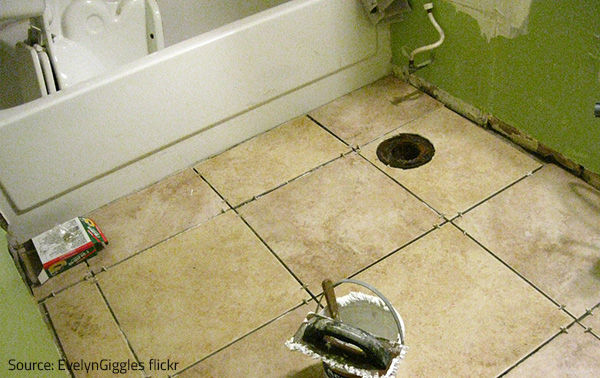Stopping Water Damage in the Bathroom
Stopping Water Damage in the Bathroom
Blog Article
What are your thoughts and feelings on How to Prevent Bathroom Water Damage?

The restroom is incredibly vulnerable for moist build-up and also possible water damage because of the constant use water in it. This write-up supplies simple evaluation methods to assist spotting water damage dangers.
The regular use water in the washroom makes it exceptionally vulnerable for moist accumulation and potential water damage. By examining it routinely, you can minimize water relevant problems.
The complying with collection of examinations is simple to do and also need to be done once in every three months in order to keep your restroom in good shape and to prevent prospective water damages triggered by the tub, the shower, pipeline joints and also plumbing, sinks, closets, and also the commode
Do not forget executing these inspections and also be detailed while executing them. Remember that these simple inspections can save you a great deal of cash by giving very early signs for water damages
Bath tub and also Shower
The shower and bathtub require unique focus and also upkeep. Check the tiles and change if fractured. See to it that there is no missing out on grout in between the ceramic tiles. Check as well as replace fractured caulking at joints where the wall surfaces satisfy the floor or the bathtub. Clogged drains pipes and also pipelines issues will certainly avoid the bathtub from drying and also might suggest major problems beneath the bath tub. Talk to an expert instantly to stop structural damages. Focus on discolorations or soft locations around the bath tub walls as they may show an interior leak.
Plumbing
Signs for water damages are tough to discover because most pipes are installed inside the wall surfaces.
Pay special attention to flooring and also wall surfaces moisture and also spots as they may show an undetectable plumbing problem. Check dampness degrees in adjoining areas also.
Sinks and also Cabinets
Sinks as well as cabinets are revealed to wetness and also moisture daily and also are usually neglected. Evaluate on a regular basis under the sink and also on the counter top above it. Fix any drip in the catch as it may recommend drain issues. Look around the sink, slow draining pipelines may suggest a blocked drainpipe. Replace sink seals if they are split or loose.
The Bathroom
The commode is a susceptible water joint. Inspect the water lines and also look for leaks around the bathroom seat, in the hose, as well as under the water container. If you discover any kind of signs of dampness on the floor around the bathroom, look for leaks in the toilet edge and also container seals.
Understand that hanging commode bowl deodorants raises the chances for blockages.
Water Damage Signs In The Bathroom To Avoid Cleanup
Musty smell
This is one of the easiest signs to catch because musty smells are so odorous. The damp, earthy, moldy smell should be a big red flag. The smell will develop when moisture gets trapped in surfaces, and begins to facilitate mold growth. Leaking pipes under cabinets, inside walls, and behind shower fixtures will cause moisture to stay trapped and not dry, which will lead to mold growth and spread. As soon as you notice any musty smells in your bathroom, have it checked for hidden water damage and cleanup signs.
Visible mold
If the smell isn’t there to give it away, sometimes you will actually see mold growth. Finding mold in your bathroom is a serious problem, because mold is very harmful to your health. By the time mold growth is visible, it also means that water damage has already occurred and been present for some time. The only way the mold problem can be resolved is to find the source of the moisture and get it stopped. To safely and adequately remove mold, you need to have professionals handle the remediation. Do not waste any time in getting mold problems addressed, fixed, and sanitized so that you can protect you and your family from the many respiratory symptoms caused by mold exposure.
Damaged floors
Bathroom floors should be able to withstand some exposure to water while still remaining in good condition. However, when excess exposure or water leaks occur, they will begin to damage even the most water-resistant flooring. If you notice any cracking, bubbling, staining, or warping on your bathroom floors, there is probably a water leak somewhere causing the distortion. If you notice areas of the floor have become softer, or even have a spongy feeling, there is probably damage to the subfloor. Subflooring is typically made up of plywood. When plywood is exposed to water or moisture, it will absorb it. Once it has become saturated, the weight of the excess water will cause the wood to swell and soften. Check the floors in your bathroom frequently to catch any of these sings before they lead to damaged subflooring.
Changes on walls
When water leaks behind walls, it will cause changes in the drywall. Peeling plaster, blistering paint, and soggy wallpaper are all good indicators that excess water is building up behind the wall. Water leaking behind drywall will cause it to swell and be soft to the tough. If you start to notice gaps along the trim of your walls, or where tile meets the wall, it could also be a strong indicator that there is a leak behind the wall. Any changes, distortion, or damage on the walls should be evaluated as soon as you notice it to prevent further water damage and cleanup.

I discovered that article on Common Causes of Water Damage in a Bathroom when browsing the web. Enjoyed our blog? Please share it. Help someone else discover it. We appreciate reading our article about Common Causes of Water Damage in a Bathroom.
Schedule Free Estimate Report this page